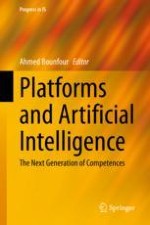2022 | OriginalPaper | Buchkapitel
What Artificial Intelligence Can Do and What It Cannot Do
verfasst von : Nicolas Sabouret
Erschienen in: Platforms and Artificial Intelligence
Aktivieren Sie unsere intelligente Suche, um passende Fachinhalte oder Patente zu finden.
Wählen Sie Textabschnitte aus um mit Künstlicher Intelligenz passenden Patente zu finden. powered by
Markieren Sie Textabschnitte, um KI-gestützt weitere passende Inhalte zu finden. powered by
